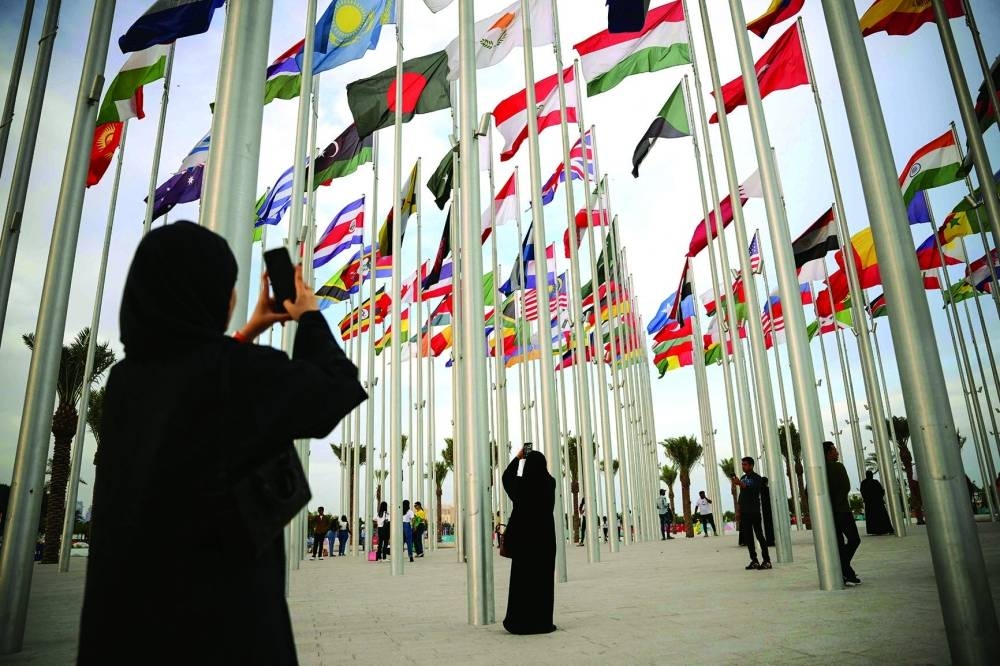Higher commodity prices are boosting Qatar’s public finances, Oxford Economics said and noted energy prices will remain high in 2023, buoying the country’s fiscal position.
Pending the release of the 2023 budget, Oxford Economics forecasts a fiscal surplus of 8.8% of GDP next year and for the public debt-to-GDP ratio to subside to 41.7% in 2023, from a projected 46.3% this year.
“With the debt burden shrinking, Qatar's credit rating will likely be upgraded further,” Oxford Economics said in its latest country report.
In early November, S&P raised its rating for Qatar by a notch to ‘AA’ with a stable outlook, which came on the heels of Moody's positive credit outlook change.
“We keep our 2022 GDP growth forecast at 5.2% and continue to see the pace of GDP growth slowing to 2.7% in 2023,” noted Maya Senussi, Oxford Economics’ senior Middle East economist.
Qatar's economy is now the largest it has ever been following the 6.3% year-on-year (y-o-y) surge in output in Q2. Data show the expansion was driven by 9.7% y-o-y growth in the non-oil sectors, up from 5% in Q1, amid strength in construction, transportation, wholesale and retail trade, and real estate.
Meanwhile, the oil sector expanded by 1.2% y-o-y, following an annual decline of 1.8% in Q1. Though recent industrial production data have yet to be released, Oxford Economics expects contribution from the oil sector to have remained positive.
Energy prices have come under pressure as the world economy weakens.
But the researcher thinks they will remain elevated, providing support to Qatar's macroeconomic environment.
“The 2023 budget is being finalised, but we expect it to again be based on cautious revenue assumptions, such as the $55 a barrel oil price underpinning this year's budget. With spending somewhat rising and oil and gas prices boosting revenue, we expect a budget surplus averaging 8.8% of GDP in 2022-2023,” Oxford Economics noted.
Qatar’s figures for H1, 2022 show the widest budget surplus since 2014. The budget was in surplus in 2021, reversing a deficit of 2.1% of GDP in 2020, the lowest in the GCC, Oxford Economics said.
The riyal's peg to the dollar implies Qatar's central bank will track the higher rate path in the US, where the researcher expects the Federal Reserve to continue tightening into next year.
The monetary authority has matched the Fed's moves since March, most recently raising the repo rate by 75 bps to 4.75% in November. While the hikes have had a very limited impact on growth so far due to supportive energy and fiscal trends, borrowing costs will likely have risen by 425 bps in a year, weighing on non-oil growth in 2023, Oxford Economics noted.
Qatari banks have been resilient and are well capitalised and profitable, with low levels of non- performing loans.
However, their reliance on foreign funding has risen, and Fitch downgraded some bank ratings earlier this year, it noted.
Business
Higher commodity prices boosting Qatar public finances: Oxford Economics
Energy prices will remain high in 2023, buoying the country’s fiscal position, Oxford Economics said and forecasts a fiscal surplus of 8.8% of GDP next year

Women take photos at the Flag Plaza in Doha. Qatar's economy is now the largest it has ever been following the 6.3% year-on-year (y-o-y) surge in output in Q2. Data show the expansion was driven by 9.7% y-o-y growth in the non-oil sectors, up from 5% in Q1, amid strength in construction, transportation, wholesale and retail trade, and real estate.

